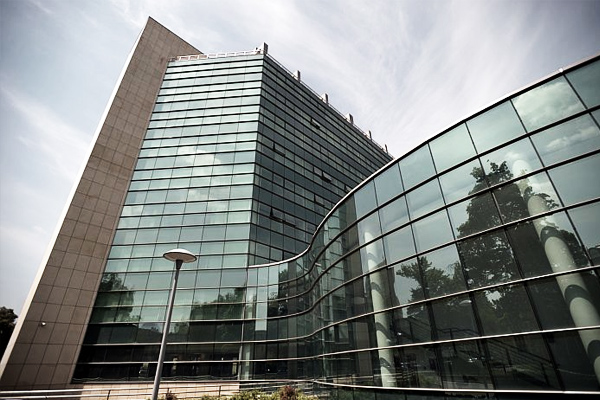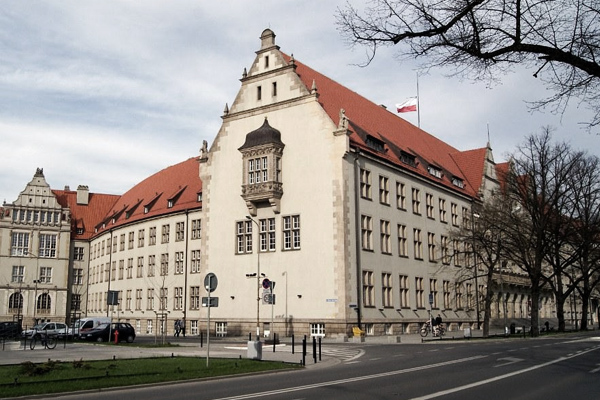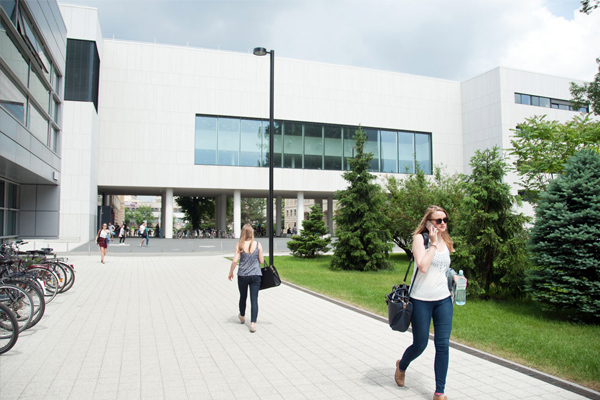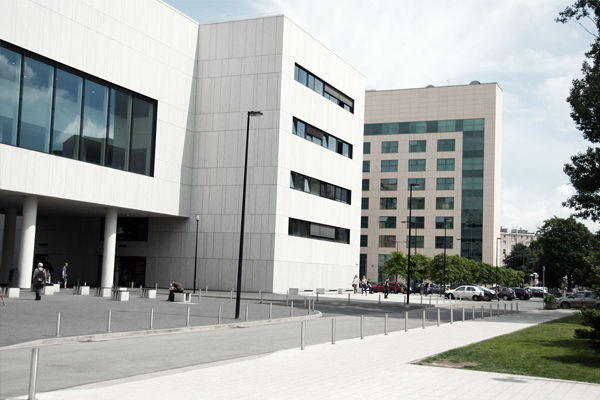Venue
Workshop location
The 4th International workshop on opportunities and challenges in mid-infrared laser-based gas sensing (mirsens 4) will be held on the campus of the Wrocław University of Science and Technology, in the Congress Center (building D-20), about 2 km from the historical centre of the city, 20 minutes by public transport from the main railway station and about 10 km from the airport.

Congress Center address
Wrocław University of Science and Technology
Building D20
Janiszewski street 8,
50-372 Wrocław
How to get to Wrocław
By plane:
There are direct flights to Wrocław (WRO) from European countries, including cities of Munich (5 daily), Frankfurt (2 daily), Copenhagen (1 daily) and Warsaw (6 daily). Detailed information is available on the Wrocław Airport website.
By train:
The timetable of the international and local connections, e.g. Warsaw-Wrocław, can be found on the Polish State Railways (PKP) website.
How to get to the workshop site in Wrocław
- Airport - Main Railway Station (the last bus stop):
- bus no. 106 (operates every 20-30 minutes)
- a taxi rank is located in the front of the passenger terminal
- Main Railway Station - University Campus (4th bus stop): buses nos. 145, 146, 149, D
Some interesting details about Wrocław
The mirsens 4 workshop will take place in Wrocław, the thousand-year-old city located in the south-western part of Poland. Wrocław is the third largest academic center in Poland with about 100 000 students at almost twenty universities and academies. The official motto "Wroclaw - the meeting place" expresses economical, intellectual and cultural aspirations of the city.




Wrocław University of Science and Technology is an inheritor of the tangible property of the German Königliche Technische Hochschule Breslau and the intellectual and research traditions of the Lvov Polytechnic. The university has functioned under the current name since 1945. It was established and organised by researchers from Lvov and Warsaw. Since the very beginning of its existence, it has been an important centre of the technical education. Today, it belongs to the best technical universities in Poland - over 32 000 students learn here under the guidance of 2 000 academic teachers, at 12 faculties and the Department of Fundamental Studies, as well as in the 3 regional branches. Recently, it has been announced the Best Technical University in Poland for the second time in a row in the oldest Polish ranking of higher education schools carried out by the "Wprost" magazine (in 2006 and 2007).




Wrocław, the capital of the Lower Silesia region, is one of oldest and most beautiful cities in Poland. The city, placed on both sides of the Oder river, criss-crossed with four other rivers and many canals, is an unique city of twelve islands and over one hundred bridges. The population of Wrocław is about 640 000, making it the fourth largest city in Poland. Wrocław is located in the south-western part of Poland, with good communication connections with nearby major European cities like Berlin, Dresden or Prague. The airport, located 10 km from the city center, enables travelling to major international European airports in Belgium, Germany, Great Britain, Ireland, Spain and Sweden.
The first historical notes about Wrocław come from year 1000 when the bishopric was founded here. In the past the city was a part of Poland, Bohemia (Czech), Austria, Prussia, Germany and Poland again. Fortunately, many monuments weathered numerous storms of history, and recently were restored to their past state shapping the city as it is today.
The most significant places of interest in Wrocław are situated around the Old Town, including the Marketplace - one of the largest old city market squares in Europe. It is 205 meters long and 175 meters wide. In the center of the marketplace the Town Hall is located, which is recognized as one of the most beautiful gothic buildings in Europe. Its tower is crowned with the oldest clock and bell in Poland, dated 1368. In the basement of the Town Hall there is located the oldest restaurant in Europe (founded in XIV century) called Piwnica Świdnicka (Świdnicka Basement).




Very important sacral monuments in Wrocław are placed in Ostrów Tumski, a place from which the history of Wrocław begins. Here, in IX century original settlement of Wrocław was founded. At the beginning Ostrów Tumski was an island, but in year 1824 one of the Oder river canals was filled and Ostrów became a part of the solid land. In Ostrów Tumski there is located the most important sacral building in Wrocław - Cathedral of St. John the Baptist.




Centennial Hall is a unique venue on the map of Poland, where history harmoniously interacts with modernity. It was designed by Max Berg, an outstanding city architect, and recognized as one of the top masterpieces of the 20th century architecture. The designer assumed that the Hall was to serve citizens of Wrocław and visitors to Lower Silesia’s capital city, and it continues to perform this function successfully. Multi-purpose space, unusual structure, unique and spacious location represent just a few of its strengths. Centennial Hall complex currently is one of the most desired venues among domestic and foreign organizers of major exhibitions, conferences, cultural, sport and congress events. The Hall’s inscription on UNESCO World Heritage List in 2006 emphasized the rank of this facility. Undoubtedly it is one of the most characteristic flagships of Wrocław in the international scale, and exceptionally magic site in the city where the charts of history record its multi-generational experience.
Panorama Racławicka is one of the places which cannot be omitted during the visit in Wrocław. It is a rotunda with 120x15 meters painting inside. The painting was created by Jan Styka and Wojciech Kossak during years 1893-1894. It presents the Battle of Racławice - one of the Kościuszko Uprising episodes. The painting was created using a special type of perspective which, combined with the lighting and the artificial terrain, provides the feeling of reality and immersion.